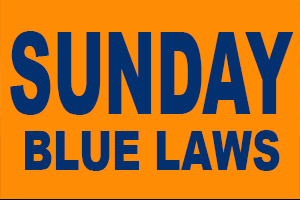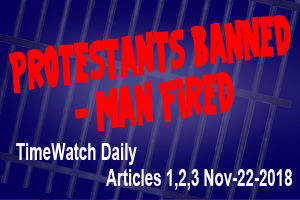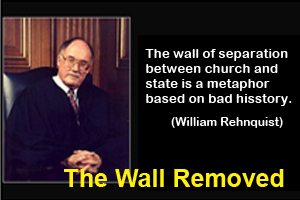
Jews and Muslims – Part 2
TimeWatch Editorial
February 07, 2017
Part 1 of this Editorial dealt with the fact that Jews have joined with Muslims in the demonstrations that have been taking place at airports in opposition to the Executive Order Ban on persons from predominantly Muslim countries. The article that precipitated our interest was written by Ron Kampeas. History was described as the motivation of the coming together. But what history is that? On the “Holocaust Encyclopedia” website, is recorded the following under the heading “The United States and the Holocaust:”
“During World War II, rescue of Jews and other victim groups persecuted by Nazi Germany was not a priority for the United States government. The US Congress passed new, restrictive quota laws in 1924 that limited the number of immigrants who could enter the US from Europe each year. During the Nazi period, these quotas often were not filled, even though thousands of Jewish refugees sought admittance to the US from Nazi Germany and Nazi-occupied territories.” “The United States and the Holocaust:” The Holocaust Encyclopedia
America’s attitude towards the Jews during the difficult times of the Nazi period has probably remained a little known fact. Americans were not in the least bit excited about having Jewish refugees in their country, regardless of what they might have been going through. In fact, as things became more difficult for them, Americans became even less disinterested in the Jewish condition. Listen to how this article continues.
“Once the Great Depression began in 1929, President Herbert Hoover instructed the State Department to enforce the quota laws very strictly, which made it very difficultrefugees in the 1930s to obtain immigrant visas . Immigrants needed to prove they were not “likely to become a public charge” and had the financial resources to support themselves indefinitely in the United States. Despite the ongoing persecution of Jews in Germany, public and government attitudes related to immigration were influenced by the economic hardships of the Great Depression, which intensified anti-Semitism, isolationism, and xenophobia. After World War II began in 1939, American consuls abroad also screened refugees on national security grounds, making an already difficult immigration process even harder.” “The United States and the Holocaust:” The Holocaust Encyclopedia
Not only was there a lack of interest in relieving the suffering experienced by the Jews in Europe, but the press was not particularly interested in detailing the events that were taking place in that part of the world either. Listen to this:
“During World War II, the American press did not always publicize reports of Nazi atrocities in full or give them prominent placement in the papers. Newspapers had reported on Nazi violence against Jews in Germany as early as 1933, as well as theNuremberg Laws of 1935 and the expanded German anti-Semitic legislation in 1938 and 1939. The nationwide state-sponsored terror against Jews of November 9-10, 1938—known as Kristallnacht (Night of Broken Glass)—made front-page news across the US as did Hitler's infamous prediction, expressed to the Reichstag (German parliament) on January 30, 1939, that a new world war would mean the extermination of the Jewish “race.” “The United States and the Holocaust:” The Holocaust Encyclopedia
What was occurring in the United States was simply an extension of what was occurring in Germany and in Europe. On the “Holocaust Encyclopedia” website, is recorded the following under the heading “Anti-Semitic Legislation 1933 -1939.” Here is what that article says:
“Anti-Semitism and the persecution of Jews were central tenets of Nazi ideology. In their 25-point party program published in 1920, Nazi party members publicly declared their intention to segregate Jews from “Aryan” society and to abrogate their political, legal, and civil rights. Nazi leaders began to make good on their pledge to persecute German Jews soon after their assumption of power. During the first six years of Hitler's dictatorship, from 1933 until the outbreak of war in 1939, Jews felt the effects of more than 400 decrees and regulations that restricted all aspects of their public and private lives.” “Anti-Semitic Legislation 1933 -1939” The Holocaust Encyclopedia
The attitudes expressed by the Germans regarding Jews were all inclusive in nature. It is therefore not surprising that the similarities with the Executive Order issued in the past few days, would immediately awaken awareness in the minds and hearts of the Jews in America. The laws in Germany included the following.
“The first major law to curtail the rights of Jewish citizens was the Law for the Restoration of the Professional Civil Service of April 7, 1933, which excluded Jews and the “politically unreliable” from civil service. The new law was the German authorities' first formulation of the so-called Aryan Paragraph, a regulation used to exclude Jews (and often, by extension, other “non-Aryans”) from organizations, professions, and other aspects of public life. This would become the foundation of theNuremberg Race Laws of 1935 , which defined Jews not by religious belief but by ancestral lineage and which formalized their segregation from the so-called Aryan population.” Anti-Semitic Legislation 1933 -1939” The Holocaust Encyclopedia
Of course we often believe that the Anti-Semitism began with Hitler’s Germany, not so. Jerry Darring has made a list of Catholic actions that demonstrate their hatred of Jews. Here are some of the items found in that list.
| 1215 | The Fourth Lateran Council decrees that Jews are to wear distinctive clothing, and on the three days before Easter they are not to go out in public |
| 1222 | The Council of Oxford prohibits the construction of new synagogues |
| 1227 | The Council of Narbonne orders Jews to wear a round patch |
| 1230 | Jews in France are forbidden to lend money on interest |
| 1234 | The Council of Arles orders Jews to wear a round patch |
| 1235 | Thirty-four Jews are burned to death in Fulda on a blood-libel charge |
| 1246 | The Council of Béziers orders Jews to wear a round patch |
That list is just a sample of some of the early actions taken against Jews. For theirs is an extended history of persecution and suffering. Not surprisingly therefore, those who remember the past quickly recognize signs in the present and warnings of the future,
Cameron A. Bowen







